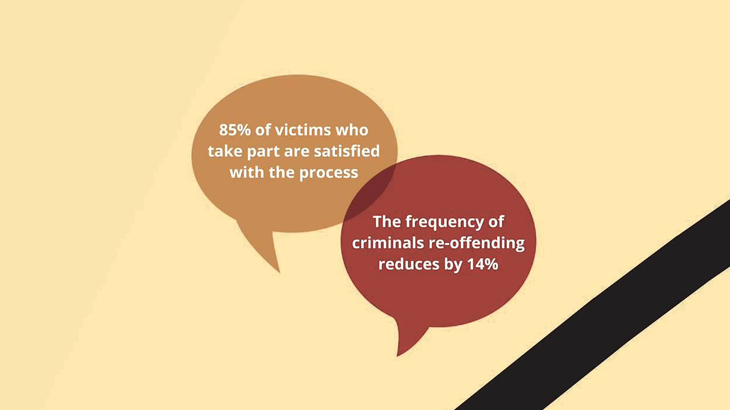Is the model of ‘restorative justice’ more effective than the usual criminal sanctions?
London, UK − 28 February 2019
By Tehmina Kazi
In November 2018, Welsh rugby player Gareth Thomas – the UK’s first rugby player to come out as gay – was punched in the face during a night out in Cardiff. South Wales Police confirmed the attack as a homophobic hate crime. In an emotional video posted to Twitter, Thomas explained that he had been “the victim in my own city of a hate crime, for my sexuality.” LGBT+ hate crime is disturbingly common: according to Stonewall, one in five LGBT+ people have experienced a hate crime or incident because of their sexual orientation or gender identity in the last 12 months.
What is less common is the way that Thomas chose to deal with the incident. Alongside the usual criminal justice process, he requested restorative justice, a carefully-facilitated process where victims can explain the true impact of the crime to their offenders. Thomas did this because he thought “the perpetrator could learn more that way than any other.” The restorative justice process was successful: not only did the 16-year-old offender admit to the crime, he wrote a letter of apology to Thomas.
How and why does restorative justice fill in the gaps that the traditional criminal justice process may miss?
First, restorative justice gives hate crime victims a more active role in securing justice. A common observation is that all victims of crime and their families feel sidelined during the traditional criminal justice process – and those are just the cases that go to trial. For hate incidents that may not meet the criminal threshold e.g. a person shouting abuse at a gay couple in the street, but not using or threatening violence, victims have even less of a voice.
But restorative justice could change all of this, as long as both parties agree to it. The victim and the perpetrator would come together in a mediated environment to discuss what has happened, why it has happened and how it can be repaired.
This process is likely to be even more helpful for victims of hate crime than other forms of crime, since hate crime cuts to the heart of their very identity, and they are more likely to suffer from anxiety and depression after the incident.
Second, restorative justice humanises the victim to the offender, and brings home the impact of their actions. This has happened in many restorative justice and LGBT+ hate crime cases documented by Professor Mark Walters of Sussex University, in his book, “Hate Crime and Restorative Justice.” There is generally a high awareness of this among many LGBT+ people: the Sussex Hate Crime Project found that out of 3000 Muslim and LGBT+ people, 60% said they would prefer Restorative Justice to a longer prison sentence for hate crime offenders.
Third, restorative approaches can go beyond specific incidents, and challenge the beliefs and attitudes that underpin various forms of hate crime. The importance of this is emphasised in the Home Office Hate Crime Action Plan of October 2018, which has committed to the use of restorative justice. At a time where some high-profile and particularly vicious homophobic hate crimes have been committed – a Derby gay couple recently had excrement smeared on their door by a neighbour, as part of a six-year campaign of harassment – we need to engage in the longer-term work on attitudinal change, which organisations like the Peter Tatchell Foundation have excelled in.
Photo credit: Ministry of Justice UK

